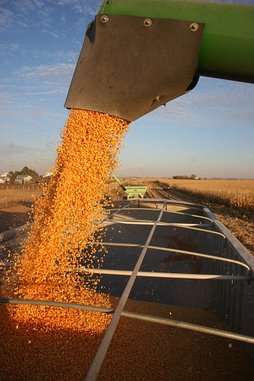In Indiana, multiple counties (including Montgomery, Madison, LaPorte and Elkhart) had a minimum of one load of corn test positive for vomitoxin, according to an Office of Indiana State Chemist county survey. In total, 40 of 92 counties had at least one load with a positive vomitoxin test.

Allowable vomitoxin levels vary depending on the livestock consuming the feed.
Levels under five parts per million (ppm) are recommended for swine, 10 ppm for chickens and dairy cattle, and 30 ppm for beef cattle, according to the U.S. Food and Drug Administration.
Many of the samples in Indiana’s counties tested between 0.5 – 3.0 ppm. Some tested at 3.01 – 5.0 ppm, and three counties (Wells, St. Joseph and LaPorte) had confirmed levels between 5.01 and 10.0 ppm, according to the survey.
And some corn in Michigan, Wisconsin and Indiana tested high enough to be considered too toxic for humans (1 ppm), pets and various livestock, Reuters reported.
Farmers say, if the current vomitoxin levels are managed, there shouldn’t be much to worry about.
“As long as this doesn’t become a widespread problem, we’re all fine,” Doug Roth, a grain farmer from Missouri who’s had some of his corn loads rejected, told Reuters.